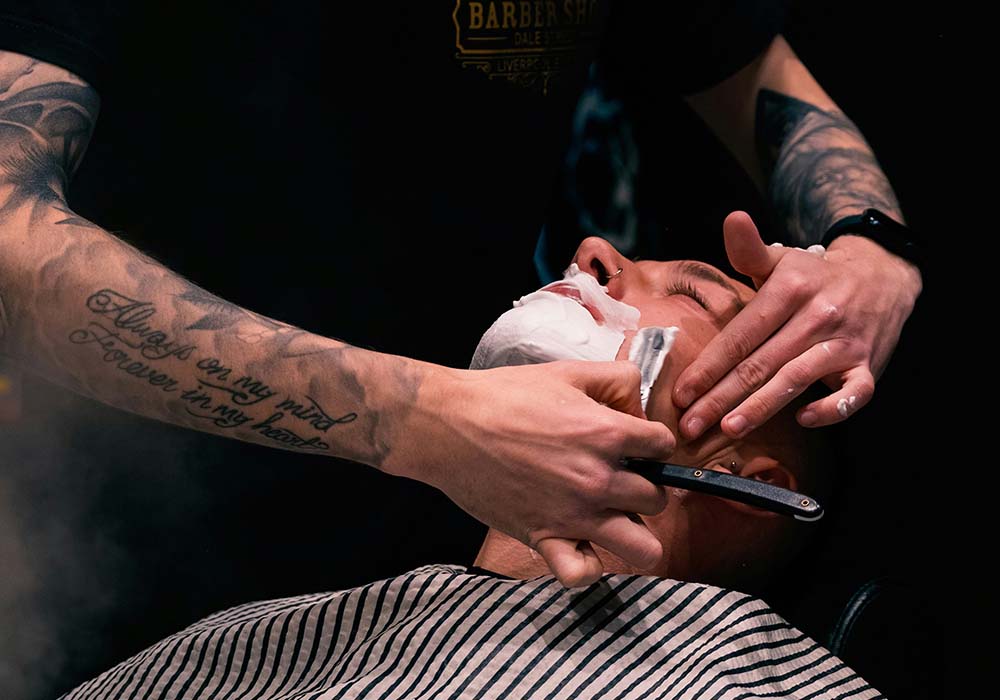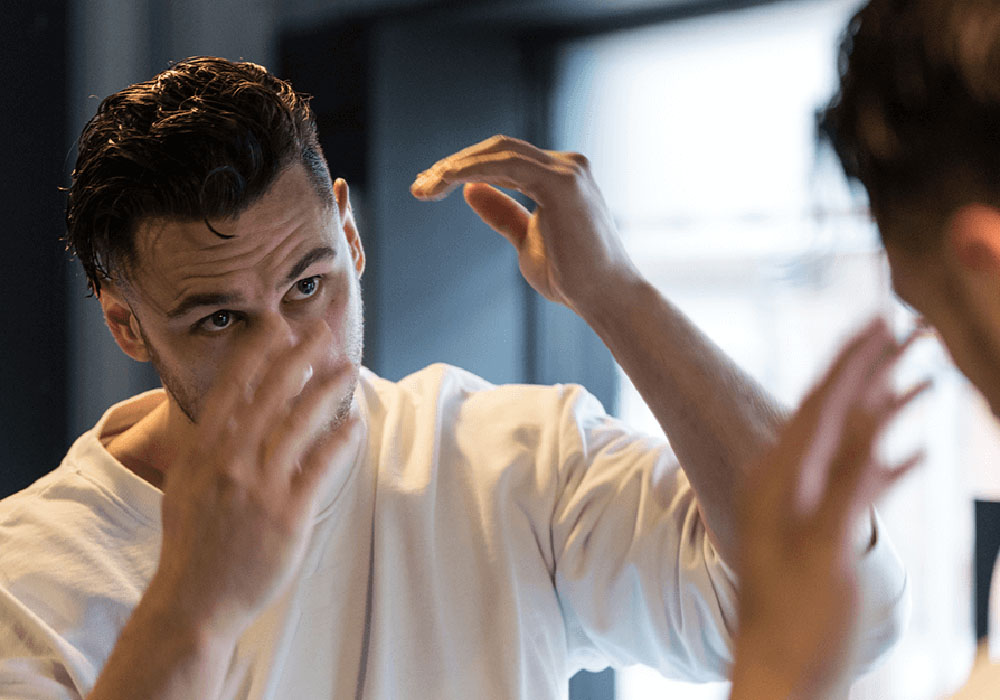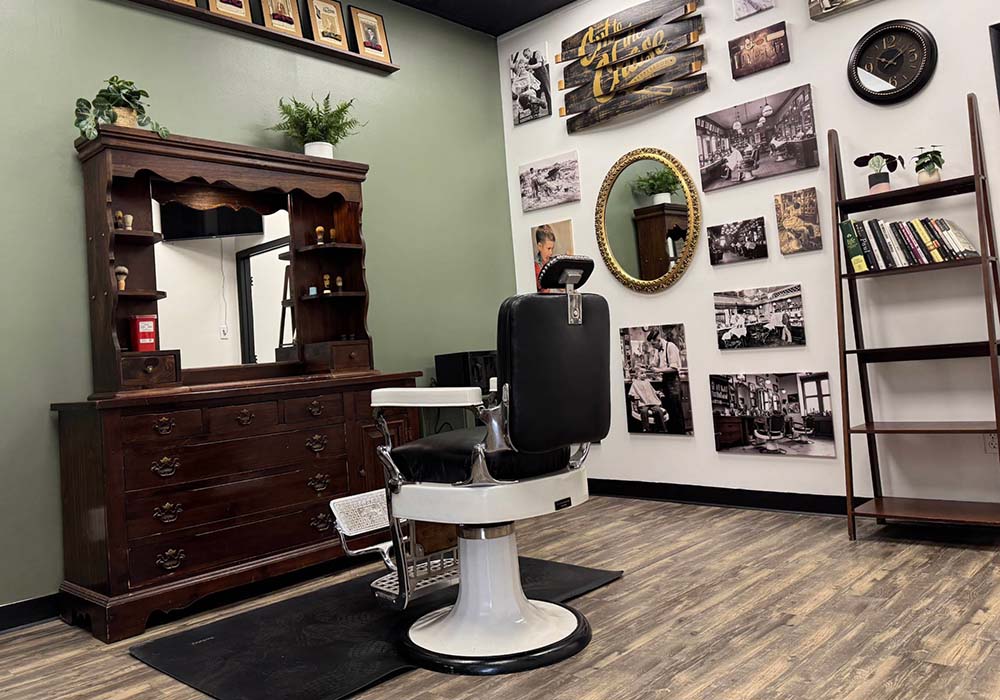Barbershops, salons, and chains each promise a haircut, but the experience, quality, and focus differ in ways every guy should know.
Highlights
- Barbershops specialize in men’s grooming—fades, straight-razor finishes, and beard shaping with a focus on precision.
- Salons cover a broader range of services, often geared more toward styling, coloring, and chemical treatments.
- Franchise chains prioritize speed and volume, often at the cost of personalization and client retention (less than 45% return by a third visit).
Ever sat in the chair for a haircut and walked out thinking, “This is not what I had in mind”?
It happens more often than you’d think. What you’re noticing is the difference between barbershop and salon and a franchise.
Picking where to get your haircut isn’t just a convenience decision. It affects how you look, how you feel, and how much you trust the person holding the clippers.
There are big differences between barbershops, salons, and chain establishments. Those differences can shape your experience and the quality of your haircut—especially for men.
Barbershops: Built for Men, Built for Consistency
Barbershops have been around for generations, and there’s a reason men keep coming back.
A true barbershop focuses on men’s hair and grooming. That focus matters. Barbers are trained in the details that make a man’s haircut look sharp and stay that way—clean fades, defined hairlines, beard work, and straight-razor finishes. These aren’t afterthoughts; they’re skills barbers practice daily.
Barbers understand how men’s hair grows, what styles work best for different face shapes, and how to handle everything from cowlicks to patchy beards. That kind of understanding can be the difference between walking out of the chair confident or frustrated.
Another advantage? Consistency. Most barbershops are built around relationships. You’re not bouncing from stylist to stylist. You see the same barber every time. He learns how your hair grows, how you like it cut, and when you’re in the mood to try something new.
This personal connection matters. Men don’t always enjoy hopping from chair to chair explaining the same thing over and over. Having a barber who knows you saves time and gives you peace of mind.
And let’s be honest—most men don’t want an overly polished, spa-like experience when they just need a haircut. Barbershops tend to feel approachable and real. The atmosphere is usually relaxed. You can sit down, talk about life or sports if you want, and leave looking sharp.
Here’s a quick synopsis…
- Focused on Men – Barbers specialize in men’s grooming: fades, beard trims, hairlines, and straight-razor finishes.
- Skilled in Detail – They understand hair growth patterns and face shapes, leading to sharper, longer-lasting cuts.
- Consistent Experience – You usually see the same barber each time, which builds trust and better results.
- Time-Saving Relationships – Your barber already knows your preferences, so there’s less back-and-forth.
- Relaxed Atmosphere – Barbershops feel approachable and comfortable, whether you want to talk or just enjoy the quiet.
Salons: Broad Services, Mixed Experiences
Salons have a broader focus. They cater to both men and women and handle a wide variety of services—coloring, perms, highlights, and longer styles.
If you’re a guy who needs a basic haircut, you can go to a salon and get a decent result. Some stylists are great with men’s cuts. But because their training often emphasizes longer hairstyles and chemical services, they may not be as comfortable with short fades, clipper work, or beard trims.
Salons can also cost more. They usually carry a wider range of products and services, and that affects pricing. You might pay salon-level rates even for a standard men’s haircut.
That said, if you’re after a service that barbershops don’t offer—like a hair color correction or a specialty treatment—salons are often the place to go. The environment is usually more upscale and formal, which some people enjoy.
But for men who prefer straightforward grooming with a sharp finish, salons may not always be the best fit.
Here’s a quick synopsis…
- Wide Service Menu – Salons cater to both men and women, offering coloring, treatments, and longer styles.
- Varied Skill with Men’s Cuts – Some stylists are excellent with men’s hair, but training often emphasizes women’s styles.
- Less Focus on Short Styles – They may not be as skilled with fades, beard trims, or straight-razor work.
- Higher Prices – Costs are typically higher due to the broader range of services and products.
- More Formal Atmosphere – The environment can feel upscale or structured, which isn’t always appealing to men.
Supercuts-Style Chains and Franchises: Speed Over Service
Chain haircut shops are built for volume. They focus on moving as many clients through the door as possible.
That business model comes with trade-offs. Most chains enforce strict time limits for each haircut—often 15–20 minutes. That might be enough time for a quick trim, but it doesn’t leave room for detail work or conversation.
This focus on speed shows in the numbers: only 45% of clients return for a second visit, and by the third visit, that number drops to 39%. That’s a sign clients often don’t feel connected to the stylist or satisfied with the results.
Chains also tend to have higher staff turnover. Many of the people cutting hair there are fresh out of school or still building their skills. There’s nothing wrong with being new, but when you combine inexperience with strict time constraints, quality can suffer.
Chains are convenient, and they’re usually affordable. But for men who care about a consistent look and a clean finish, the lack of personalization can be frustrating.
Here’s a quick synopsis…
- High-Volume Business Model – Chains focus on moving clients through quickly, with cuts often limited to 15–20 minutes.
- Rushed Results – The emphasis on speed can mean less time for personalization and precision.
- Inexperienced Staff – High staff turnover means many employees are still building their skills.
- Low Client Retention – Only 45% of clients return for a second visit, and that number drops to 39% by the third.
- Affordable but Impersonal – Chains are convenient and low-cost, but they can feel transactional and inconsistent.
How the Experience Compares
Here’s a quick comparison:
- Barbershops: Focused, consistent, personal.
- Salons: Broad, versatile, sometimes formal.
- Chains: Fast, affordable, but impersonal.
At a barbershop, you can expect a haircut that takes 30–45 minutes. There’s time for a real consultation, time to check in about your last cut, and time to make sure the details are right.
At a salon, you might get a higher-end environment, especially if you’re adding extra services.
At a chain, you’ll be in and out quickly. That’s fine if speed is all you need. But many men find they’re back in the chair sooner because the haircut doesn’t hold its shape or wasn’t quite what they wanted.
Let’s Compare and Contrast
| Feature | Barbershops | Salons | Chains |
|---|---|---|---|
| Service Menu | Simple and focused on men’s cuts, beard trims, and grooming | Wide range: men’s and women’s cuts, coloring, treatments, and longer styles | Basic haircuts, very limited add-on services |
| Skill Focus | Specialized in men’s hair, fades, beard work, and straight-razor finishes | Strong with longer styles and chemical services, less focus on short fades | General training, staff often newer and still building skills |
| Consistency | You usually see the same barber each visit, building trust and results | Varies; you may get a different stylist each time | High staff turnover makes consistency difficult |
| Time Spent | 30–45 minutes per cut, enough time for detail and conversation | 30–60 minutes, especially if extra services are added | 15–20 minutes per cut; speed is prioritized |
| Atmosphere | Relaxed and approachable, designed for men to feel comfortable | More formal or upscale, designed to appeal to a broad clientele | Transactional, in-and-out environment |
| Price Point | Moderate, fair value for the quality and detail provided | Higher, due to wider menu and product overhead | Lower, but often at the expense of personalization and precision |
| Client Retention | High—relationships and consistency keep men returning | Mixed—depends on stylist loyalty | Low—only 45% return for a second visit, and 39% by the third |
Why Personal Attention Matters for Men
A good haircut isn’t just about removing hair. It’s about shaping your style to match your face, your job, and even your personality. That kind of work takes time and focus.
When a barber or stylist can slow down, they notice the little things. How your neckline sits. Where your hair grows unevenly. How your beard fills in (or doesn’t). Those details are what keep a haircut looking clean for weeks instead of days.
At a chain, there’s often no room for that level of care. One barber described working at a chain early in his career. “I’d look at the clock and think, ‘Five more minutes would make this haircut so much better.’ But I had someone waiting, and the goal was to keep the line moving.”
That pressure doesn’t help anyone. Clients feel like a number, and barbers feel rushed.
The Emotional Side of a Haircut
Most men don’t enjoy a bad haircut. You’ve probably had one and spent the next week wearing a hat or trying to fix it yourself in the bathroom mirror.
Barbershops help you avoid that. They give you a place where you can relax. Where you don’t have to repeat your instructions every time. Where you trust the person behind the chair to get it right.
And here’s the thing: looking good matters. It’s not about vanity. It’s about confidence. Walking into a big meeting, heading out on a date, or even just tackling a regular day at work feels better when you know your haircut is on point.
Questions Guys Often Ask about Barbers
Choosing where to get your haircut doesn’t have to be complicated, but it’s worth thinking about. Here are the answers to the questions men ask most often about barbershops, salons, and chains.
How do I know if a barbershop is right for me?
If you want a consistent cut from someone who understands men’s hair, a barbershop is almost always your best bet. Barbers specialize in short styles, fades, beard trims, and straight-razor finishes. If that’s what you’re after, you’ll be in good hands.
What’s the difference between a fade from a barber and a fade from a salon or chain?
A barber cuts fades all day, every day. They know how to blend and shape so the cut lasts and grows out cleanly. At a salon or chain, fades might not be a daily focus, which can lead to uneven lines or bulk in the wrong spots.
Do barbers really take longer, and is it worth it?
Yes—and it’s worth every minute. Barbers spend the extra time to consult, cut with precision, and finish with details like neck shaves and product. Those extra minutes often mean a cut that looks sharper for weeks.
Why do barbers use straight razors, and does it matter?
Straight razors give the cleanest lines possible, especially on the neck and beard edges. Chains and many salons skip this step, but it’s the detail work that makes your haircut look truly finished.
How can I tell if my barber knows what they’re doing?
A good barber listens first, explains what they plan to do, and makes adjustments based on your hair type and head shape. They also take their time on details—your neckline, sideburns, and blend should all look clean.
Is the extra cost at a barbershop worth it compared to a chain?
Absolutely. Chains cut hair as fast as possible, and that shows in the results. The few extra dollars you pay at a barbershop cover experience, consistency, and an end result that you’ll actually feel good about.
What’s the difference in training between barbers and stylists?
Barbers are licensed with a focus on men’s grooming, including fades, clippers, straight-razor work, and facial hair. Stylists are trained more broadly on longer hairstyles, coloring, and chemical services.
Can barbers help me figure out what haircut is best for me?
Yes. In fact, barbers are especially qualified to do this because they understand men’s hairlines, growth patterns, and face shapes. A good barber will suggest styles that work for your job, lifestyle, and how much time you want to spend on your hair each day.
What should I expect during a typical barbershop visit?
You’ll start with a quick consultation about your cut or beard trim, followed by a precise cut that’s focused on detail. Many barbers finish with a straight-razor neck shave, product if you want it, and tips for keeping your style looking good between visits.
Why are barbershops often less expensive than salons?
Barbershops keep their menu simple: haircuts, beard trims, and straight-razor shaves. Salons handle a wider range of services and higher product costs, which often raises their prices.
Are chains always a bad idea?
Not always. If you’re in a pinch and just need a quick cleanup, a chain can work. But if you care about consistency and the finer details of your haircut, you’re better off sticking with a barber.
Which Option Is Best for You?
Here’s the short version:
- If you want a consistent cut from someone who understands men’s styles, choose a barbershop.
- If you need color, specialty treatments, or services that go beyond a haircut, a salon might be the way to go.
- If speed and cost are your only priorities, a chain will get you in and out quickly.
There’s no universal answer. But for most men, barbershops provide the right balance of skill, personal attention, and comfort.
Final Thoughts
Your haircut isn’t just a line item on your to-do list. It’s how you present yourself to the world and how you feel about yourself.
Barbershops, salons, and chains each serve a purpose. But if you’re tired of rushed, inconsistent results, consider trying a barbershop. You’ll get more than a haircut—you’ll get an experience that’s built for men and focused on quality.
The next time you sit down in the chair, think about what matters most to you: speed, versatility, or a sharp, confident finish that lasts. That choice makes all the difference.
Ready for a haircut that leaves you feeling sharp and confident? Book your next appointment with Cut to the Chase today and experience the difference of a barber who takes the time to get it right. Book Now →




